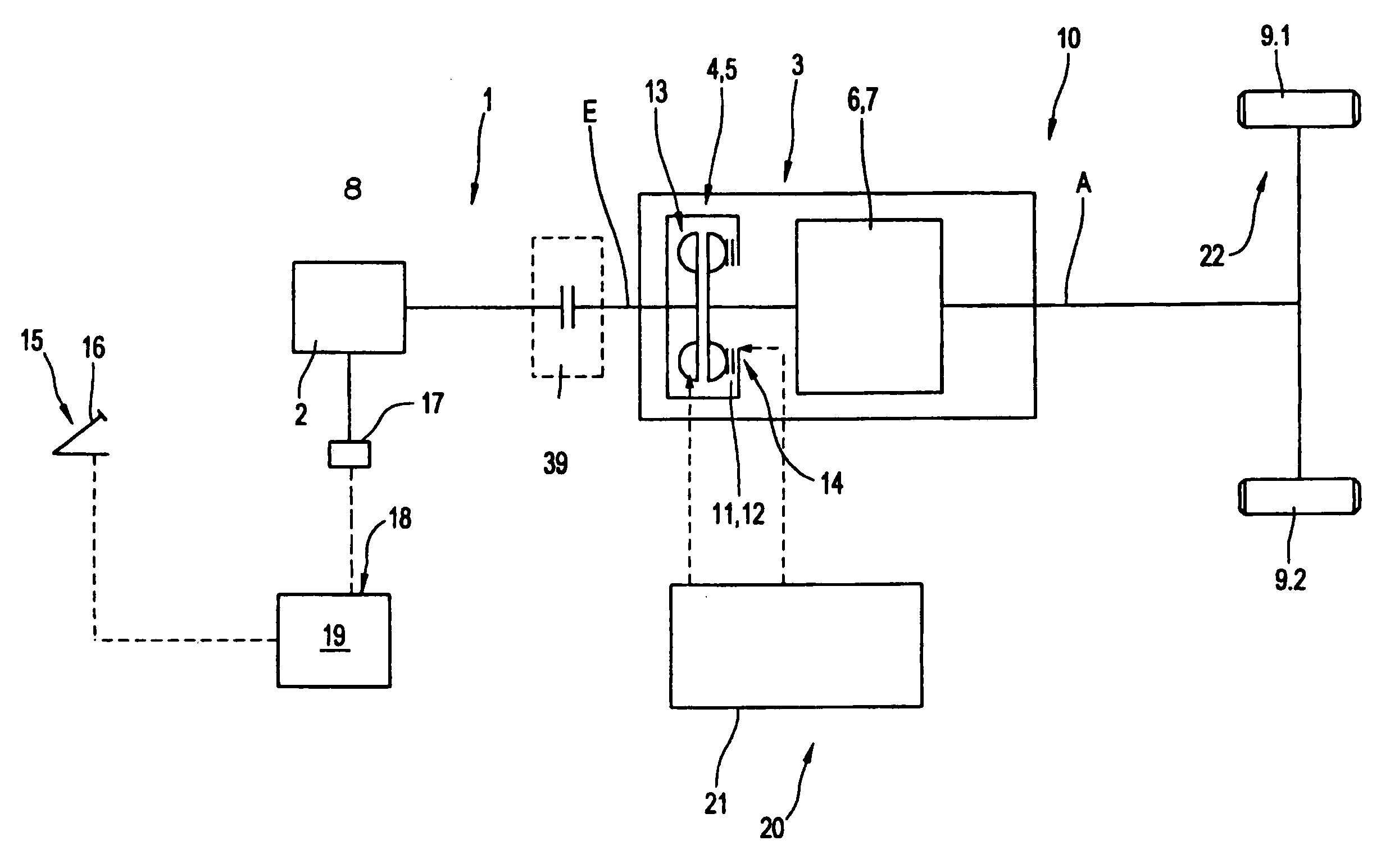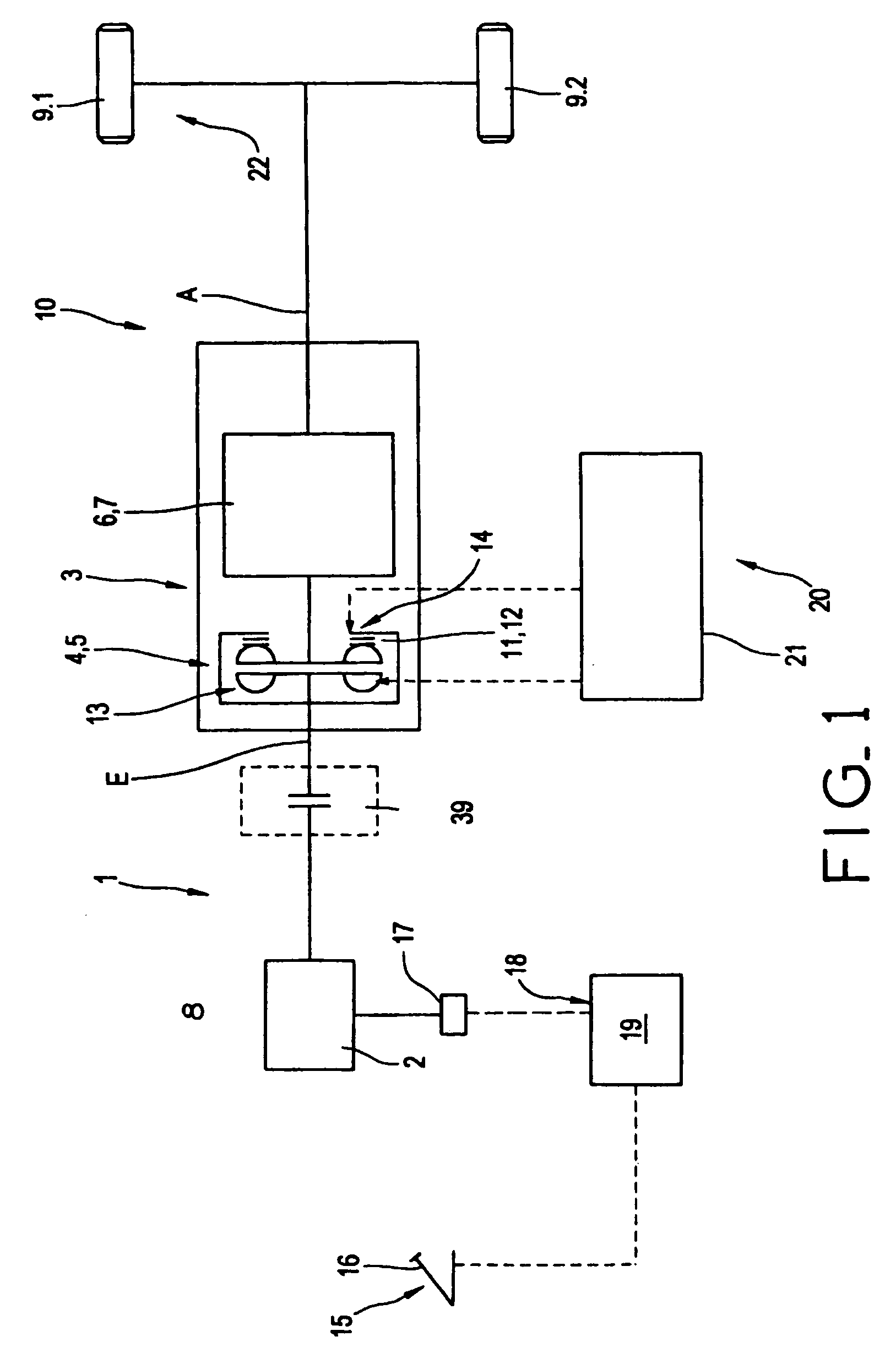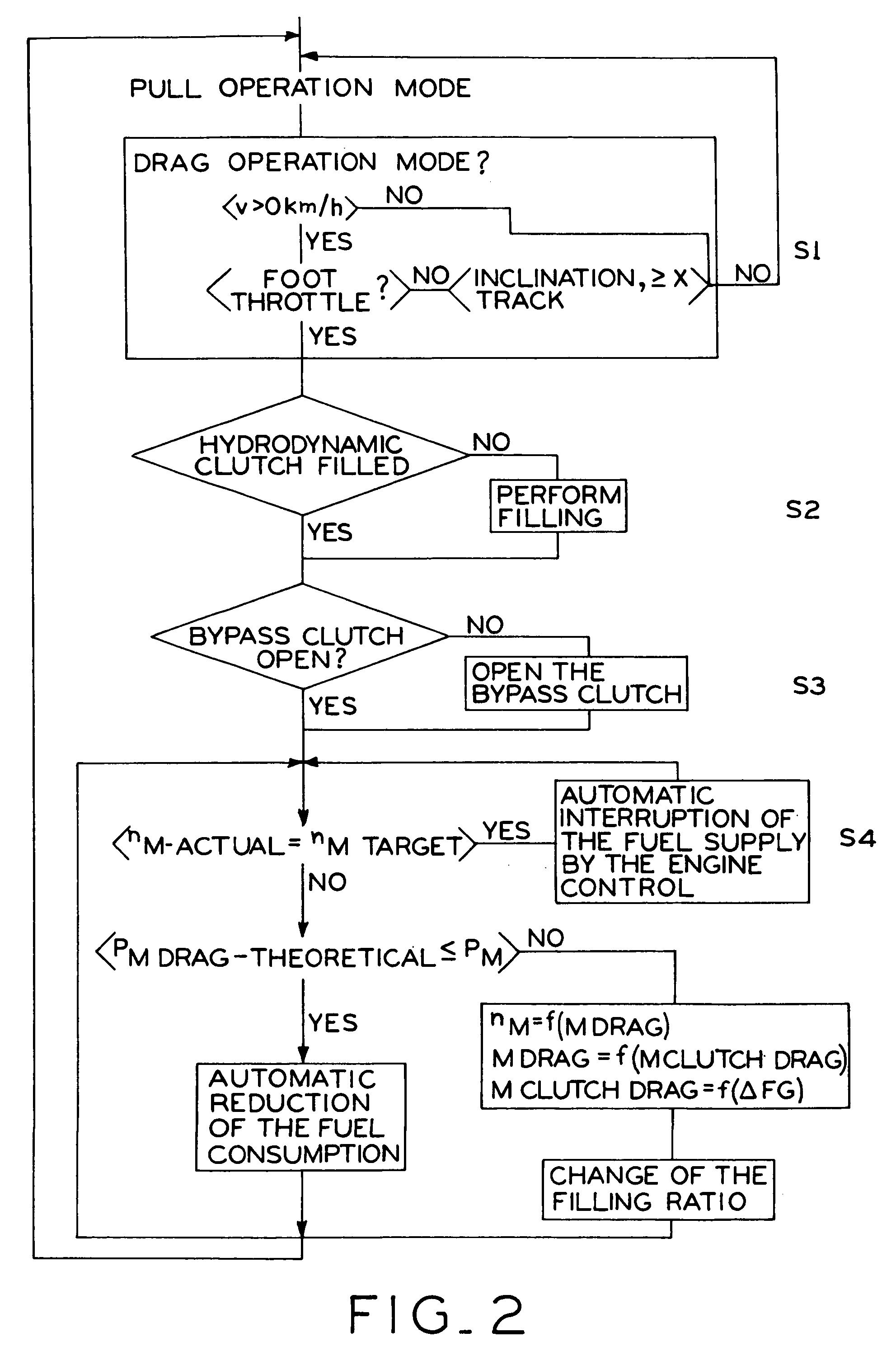[0004]Therefore, the technical task of the present invention is to develop a method for controlling and / or regulating the drag moment in a drive train with an internal-combustion engine and a gearbox unit connected with the engine, comprising a regulatable clutch, whose drive and output sides can be connected, directly or indirectly through other
power transmission elements, with the gear box input and output in the drag
operation mode phase so that, irrespective of whether the engine-braking moment is large (in order to achieve a desirable prevention of an abrupt increase in the acceleration of the vehicle) or small, a fuel-saving
driving mode is enabled. The solution, according to the invention, should also necessitate as small an expense on control technology as possible and should do so by using systems that are already available.
[0006]The method for controlling and / or regulating the
drag torque in a drive train that comprises an internal-combustion engine and a gearbox unit which can be coupled to the same, and further comprising a regulatable clutch between the gearbox unit input and the gearbox unit output, whose drive side is connected, at least indirectly, with the gearbox unit input, and whose output side is connected, at least indirectly, with the gearbox unit output, is characterized in that, during a drag operation mode phase, the power introduced from the wheels into the drive train of the vehicle is transferred by the regulatable clutch. The moment transferred by the clutch is controlled or regulated in such a way that the drive engine connected to the gearbox unit is operated at a rotational speed nM-Reference which is equal to or greater than the idling rotational speed nIdle-Run. This design has the
advantage that the
fuel supply of the engine is reduced or automatically and completely interrupted. The reduction or complete interruption of the
fuel supply depends on whether the power introduced into the vehicle and theoretically available for the internal-combustion engine to drive the
system in drag (push) operation mode or pull operation mode is, indeed, sufficient to operate the internal-combustion engine at idling rotational speed or at a higher rotational speed.
[0007]The solution provided by the present invention has the
advantage of a substantial reduction in fuel consumption as compared with the conventional arrangement in a
mechanical drive train with a permanent
coupling. This
advantage results from the fact that the vehicle is not delayed by an unnecessarily high drag torque of the internal-combustion engine due to the rotational speed resulting from the transmission of the gearbox. Thus, a vehicle riding uphill or on level
terrain behaves similarly to how it does when idling. This method can be applied without any restrictions for rides over level
terrain with little or no additional acceleration of the vehicle. In accordance with a further advantageous development of the method designed by this invention, this method can also be modified and applied to downhill rides by adjusting the appropriate control of the transferable moment of the clutch to ensure a ride with an almost
constant speed vconstant, or at least to prevent the vehicle from accelerating greatly. The rotational speed of the internal-combustion engine is regulated in dependence on the desired travel speed, while taking into consideration the transmission unit arranged between the internal-combustion engine and the wheels and the connected transmission ratios. This solution allows one to keep a
constant speed, in a simple manner, even during the drag operation mode phase and to adjust this speed to the concrete requirements, while optimally utilizing the available engine drag torque.
[0008]According to an especially advantageous embodiment of the invention, the method for controlling and / or regulating the drag torque is implemented in a drive train that comprises a drive engine and a gearbox unit, which can be coupled to the drive train, which further comprises a hydrodynamic clutch and a bypass clutch, which can be connected in parallel, and the bypass clutch serves the purpose of the mechanical
coupling between the primary and secondary wheels of the hydrodynamic clutch. During the drag operation mode phase, the power introduced by the wheels into the vehicle, and especially into the drive train, is transferred by the hydrodynamic clutch. For this purpose, the bypass clutch is deactivated. Furthermore, according to the invention, the moment transmitted by the hydrodynamic clutch is controlled and regulated by changing the
mass flow, and especially the
filling ratio, in such a way that the drive engine connected to the input of the gear unit, and thus to the drive side of the hydrodynamic clutch, is operated at a rotational speed equal to or greater than the idling rotational speed, and thus the
fuel supply to the internal-combustion engine is reduced or automatically and completely disconnected. Due to the hydrodynamic
power transmission, the drag torque is controlled free of wear. The drive side of the hydrodynamic clutch is formed by the bucket wheel, which, during the transmission of the power from the drive engine to the gearbox unit output, functions as an
impeller.
 Login to View More
Login to View More  Login to View More
Login to View More 


